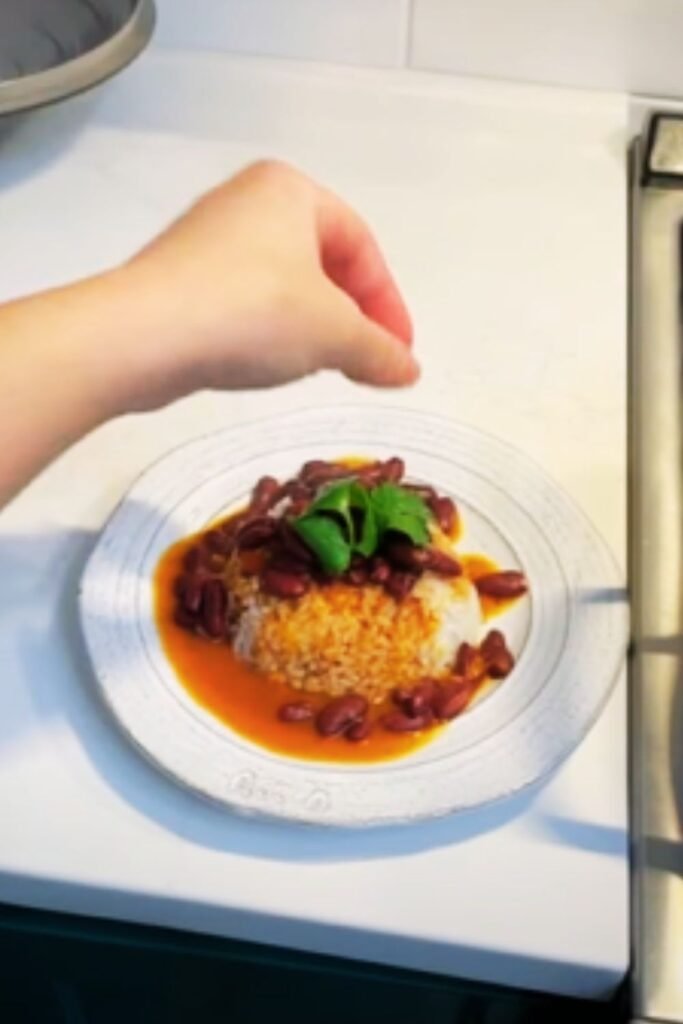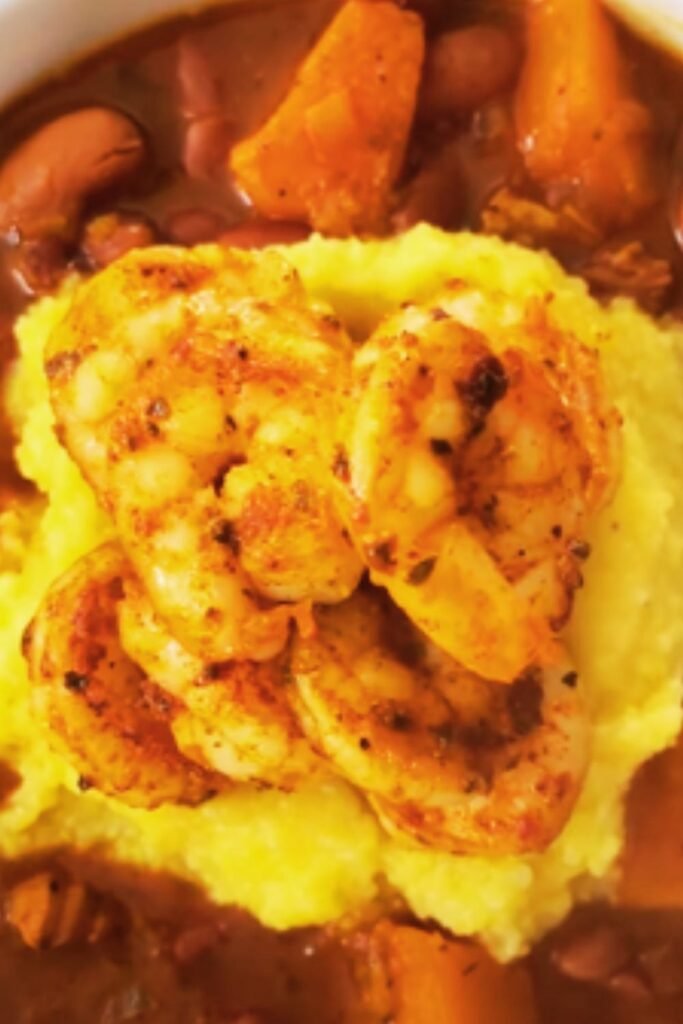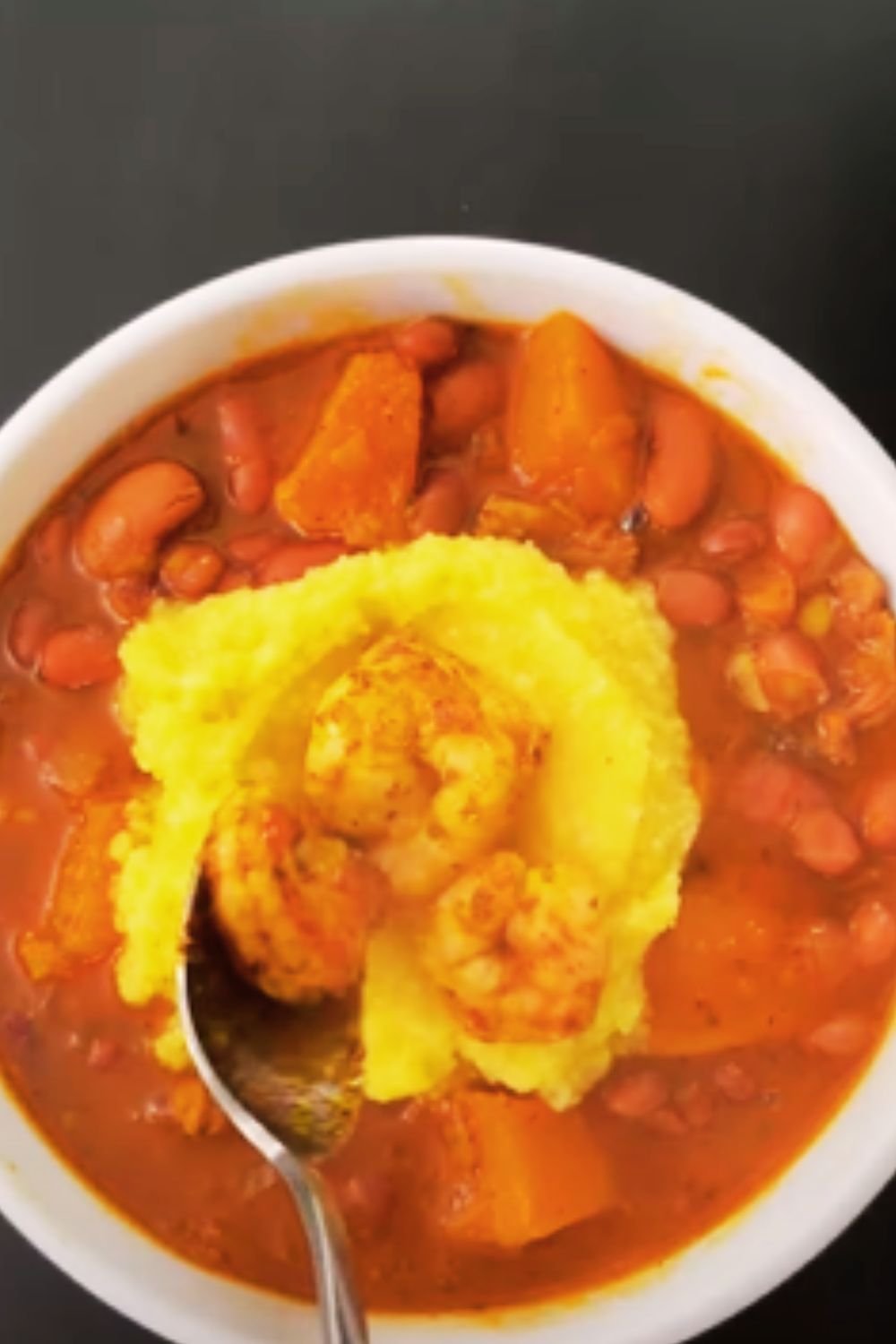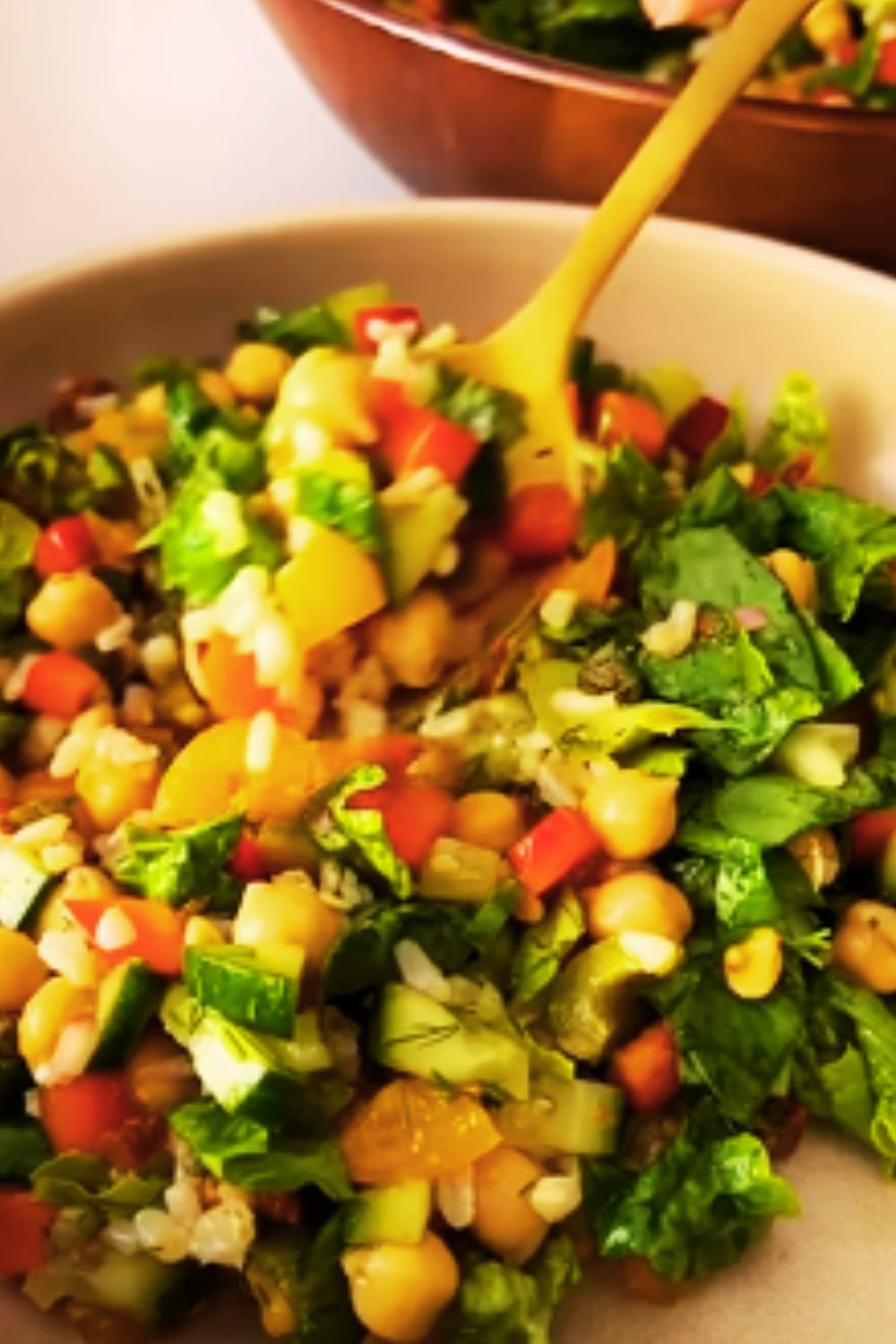There’s something truly magical about the aroma of Puerto Rican style beans simmering on the stove. The rich blend of sofrito, tomato, and spices transforms simple beans into a dish that feels like a warm hug from a Puerto Rican grandmother. Today, I’m sharing my favorite recipe for these flavorful beans that’s ready in just 45 minutes, perfect for busy weeknights when you still want something hearty and delicious.
Growing up around Caribbean cuisine, I’ve learned that authentic flavor comes from proper technique and quality ingredients. These Puerto Rican beans, often called “habichuelas guisadas,” are a staple in Puerto Rican homes and offer incredible depth of flavor despite their simple preparation. The star of the show is definitely the sofrito—a magical flavor base that gives these beans their distinctive taste.
Whether you’re looking to explore Puerto Rican cuisine or simply need a budget-friendly, protein-packed dish for your weekly rotation, these beans will not disappoint. Let’s dive into making this comforting classic!
What Makes Puerto Rican Beans Special?
Puerto Rican beans stand out from other bean preparations because of their distinctive seasoning profile and cooking method. They’re not soupy like some bean dishes, nor are they completely dry—they have the perfect amount of thick, flavorful sauce that clings to the beans and is absolutely perfect spooned over rice.
The secret to their unique flavor lies in these key elements:
- Sofrito – The aromatic base made from bell peppers, onions, garlic, cilantro, and culantro (recao)
- Sazón – A seasoning blend that typically includes coriander, cumin, achiote, and other spices
- Adobo – A blend of garlic powder, oregano, black pepper, and salt
- Olives and Capers – For briny depth that balances the richness
While traditional recipes may take hours with dried beans, my version uses canned beans without sacrificing flavor, making it accessible for weeknight cooking.
Ingredients You’ll Need

For the Sofrito (or use 3 tablespoons pre-made sofrito):
- 1 small green bell pepper, roughly chopped
- 1 small onion, roughly chopped
- 3 cloves garlic
- ¼ cup fresh cilantro leaves
- 1 culantro leaf (optional, but authentic)
For the Beans:
- 2 tablespoons olive oil
- 3 tablespoons sofrito (homemade or store-bought)
- ¼ cup tomato sauce
- 2 tablespoons tomato paste (for richness)
- 1 packet Sazón with achiote (or 1 teaspoon homemade sazón blend)
- ½ teaspoon dried oregano
- ½ teaspoon ground cumin
- 1 teaspoon adobo seasoning (or ½ teaspoon salt + ¼ teaspoon garlic powder)
- 1 bay leaf
- 2 cans (15.5 oz each) kidney beans or pink beans, drained and rinsed
- 1.5 cups chicken broth or vegetable broth
- 10 manzanilla olives, pitted
- 1 tablespoon capers (optional)
- 2 tablespoons fresh cilantro, chopped, for garnish
- 1 medium potato, peeled and diced (optional, but traditional)
Equipment List
- Food processor or blender (for sofrito)
- Large pot or Dutch oven
- Wooden spoon
- Measuring cups and spoons
- Can opener
- Sharp knife and cutting board
Step-by-Step Instructions
Making the Sofrito (Skip if using store-bought)
- Add green bell pepper, onion, garlic, cilantro, and culantro (if using) to a food processor.
- Pulse until finely minced but not completely puréed. You want some texture.
- Reserve 3 tablespoons for this recipe and store the rest in an airtight container in the refrigerator for up to a week, or freeze in ice cube trays for future use.
Cooking the Beans
- Heat olive oil in a large pot over medium heat.
- Add the sofrito and cook for 2-3 minutes until fragrant and slightly softened. This step is crucial as it blooms the flavors of the sofrito.
- Add tomato sauce and tomato paste, stirring to combine. Cook for 2 minutes until the color deepens.
- Stir in the Sazón, oregano, cumin, and adobo seasoning. Cook for 30 seconds to toast the spices.
- Add the drained beans, broth, bay leaf, olives, and capers (if using). If using diced potato, add it now.
- Bring to a gentle boil, then reduce heat to low and simmer for 25-30 minutes, stirring occasionally. If using potatoes, make sure they are tender before finishing.
- The sauce should thicken naturally as it simmers. If you prefer a thicker sauce, mash a few tablespoons of beans against the side of the pot with your spoon.
- Taste and adjust seasoning if needed.
- Remove bay leaf before serving.
- Garnish with fresh cilantro.
Note on Consistency
The perfect Puerto Rican beans should have a sauce that’s neither too soupy nor too thick—it should be substantial enough to coat the beans but still have enough liquid to spoon over rice. If your beans are too thick, add a little more broth. If too thin, simmer uncovered for a few more minutes or mash more beans to thicken.
Storing and Freezing
Puerto Rican beans actually taste better the next day, as the flavors have time to meld. Here’s how to store them:
- Refrigerator: Store in an airtight container for up to 5 days.
- Freezer: Freeze in portion-sized containers for up to 3 months. Thaw overnight in the refrigerator before reheating.
- Reheating: Warm gently on the stovetop with a splash of water or broth to loosen the sauce.
Serving Suggestions

Puerto Rican beans are traditionally served over white rice, creating a dish known as “arroz con habichuelas.” Here are some authentic ways to enjoy them:
- With white rice and a side of tostones (fried plantains)
- As part of a complete Puerto Rican meal with rice, protein, and a side of avocado
- Topped with a fried egg for a hearty breakfast
- With a side of sweet plantains (maduros) for a delicious sweet-savory contrast
- As a filling for empanadas or stuffed into baked sweet potatoes
- Served with a side of simple green salad with vinaigrette for freshness
For a non-alcoholic beverage pairing, try:
- Fresh tropical fruit juice like passion fruit or guava
- Coconut water
- A refreshing glass of iced tea with lime
Variations of Puerto Rican Beans
While this recipe uses canned red or pink beans for convenience, there are several traditional variations worth exploring:
Different Beans: Puerto Ricans make this dish with various beans:
- Pink beans (habichuelas rosadas) – the most traditional
- Red kidney beans (habichuelas coloradas)
- White beans (habichuelas blancas)
- Black beans (habichuelas negras)
Protein Additions: Many families add:
- Diced ham
- Calabaza (Caribbean pumpkin or butternut squash)
- Chunks of salt pork or bacon
- Sliced smoked sausage
- Diced chicken thighs (cooked with the sofrito)
Vegetarian/Vegan Version:
- Use vegetable broth instead of chicken broth
- Add extra vegetables like diced carrots and celery
- Include nutritional yeast for an umami boost
- Add 1 tablespoon of olive oil at the end for richness
Nutritional Information
Puerto Rican beans aren’t just delicious—they’re also nutritious! Here’s a breakdown of what you’re getting in each serving:
| Nutrient | Amount per Serving | % Daily Value |
|---|---|---|
| Calories | 320 | – |
| Protein | 15g | 30% |
| Carbohydrates | 45g | 15% |
| Fiber | 12g | 48% |
| Fat | 8g | 12% |
| Iron | 4.5mg | 25% |
| Potassium | 750mg | 16% |
| Folate | 256μg | 64% |
| Vitamin C | 15mg | 17% |
*Values are approximate based on 1 serving using kidney beans and including rice.
The Cultural Significance of Puerto Rican Beans
In Puerto Rico, beans are more than just food—they’re an important cultural tradition. Traditionally, beans were an economical way to feed a family, making them a cornerstone of Puerto Rican cuisine. They’re often cooked in large batches and shared with extended family and neighbors, symbolizing community and hospitality.
Sunday family gatherings in Puerto Rico typically feature a large pot of beans alongside other traditional dishes. The recipe is often passed down through generations with each family having their own special touches that make their beans unique.
In Puerto Rican households, learning to make perfect beans is considered an important culinary milestone. The dish represents home, comfort, and cultural identity—especially for Puerto Ricans living away from the island.
Common Mistakes to Avoid
When making Puerto Rican style beans, watch out for these pitfalls:
- Rushing the sofrito: Don’t skimp on cooking the sofrito properly. It needs time to soften and release its flavors.
- Underseasoning: These beans should be richly flavored. Don’t be shy with the seasoning.
- Too much liquid: The beans should have sauce but shouldn’t be swimming in it.
- Overcooking: With canned beans, you only need to simmer long enough to meld flavors and thicken the sauce.
- Skipping the simmer: The beans need time to absorb the flavors of the sauce.
- Not adjusting for salt: Canned beans, olives, and capers all contain salt, so taste before adding more.
Make Ahead Tips
Puerto Rican beans are perfect for meal prep! Here’s how to make the most of your time:
- Prepare sofrito in bulk: Make a big batch and freeze in 1-tablespoon portions for quick meals.
- Cook double: Make twice as much and freeze half for another meal.
- Prep components: Chop ingredients and measure spices the night before.
- Low and slow: If you have time, cook on very low heat for 1-2 hours instead of 30 minutes for even deeper flavor.

Questions & Answers
Q: Can I use dried beans instead of canned? Yes! For dried beans, soak 1 pound overnight, then cook them separately until tender before starting with the sofrito. You’ll need about 3-4 cups of cooked beans to substitute for the canned beans in this recipe. Using dried beans often results in better texture, though it requires more time.
Q: What if I can’t find culantro or recao for authentic sofrito? No worries! While culantro gives authentic Puerto Rican sofrito its distinctive flavor, you can substitute with additional cilantro. Add a touch of fresh oregano to approximate the flavor profile.
Q: Are Puerto Rican beans spicy? Traditional Puerto Rican beans are flavorful but not spicy hot. The warmth comes from spices rather than chili heat. If you prefer some heat, add a diced jalapeño when cooking the sofrito or a pinch of cayenne pepper with the other spices.
Q: Can I make this in an Instant Pot or pressure cooker? Absolutely! For canned beans: Use the sauté function for the sofrito and spices, then add the remaining ingredients and cook on high pressure for 5 minutes with a natural release. For dried beans: Skip the soaking, add dried beans with 6 cups of water or broth, and cook on high pressure for 35 minutes with natural release.
Q: Is there a substitute for Sazón if I can’t find it? Yes! Make your own by combining 1/4 teaspoon each of ground coriander, ground cumin, ground annatto or turmeric (for color), garlic powder, and salt.
Q: Why is my sauce too watery? This typically happens if you don’t simmer long enough or if you don’t drain and rinse the canned beans well. Simmer uncovered to reduce the liquid, or mash some beans to thicken the sauce naturally.
Q: What’s the difference between Mexican-style beans and Puerto Rican beans? Mexican beans often use pinto beans with chili peppers and cumin as primary flavors. Puerto Rican beans rely on sofrito, olives, and Sazón for their distinctive taste. The cooking liquid in Puerto Rican beans also tends to be thicker and more sauce-like.
Q: Can I omit the olives and capers? While traditional Puerto Rican beans include olives for their briny flavor, you can omit them if you prefer. Consider adding a splash of vinegar at the end to add some acidity that balances the rich flavors.
Final Tips for Perfect Puerto Rican Beans
For truly exceptional beans that taste like they came straight from a Puerto Rican kitchen:
- Don’t rush the cooking process. Building flavor takes time.
- Use homemade sofrito whenever possible for the freshest flavor.
- Let the beans rest for 15 minutes before serving to allow flavors to settle.
- Serve with fresh toppings like avocado, cilantro, or a squeeze of lime to brighten the dish.
- If you can find them, use authentic pink beans (habichuelas rosadas) for the most traditional flavor.
- Remember that beans thicken as they cool, so the consistency might change slightly when reheated.
These Puerto Rican style beans are more than just a side dish—they’re a celebration of flavor and culture that brings comfort with every bite. Served over a bed of fluffy white rice, they make a satisfying meal that’s as economical as it is delicious. ¡Buen provecho!


